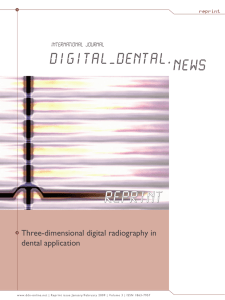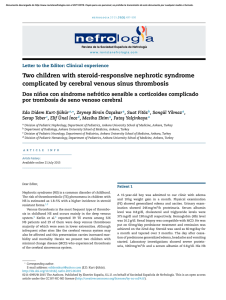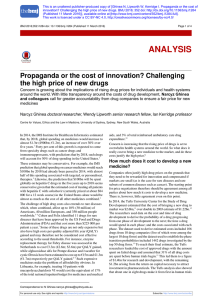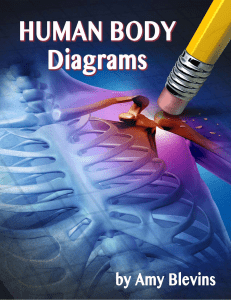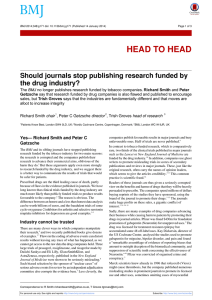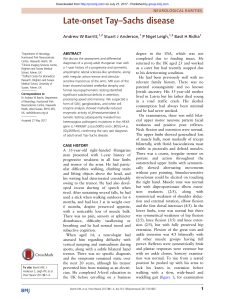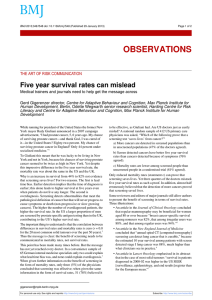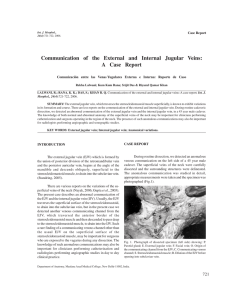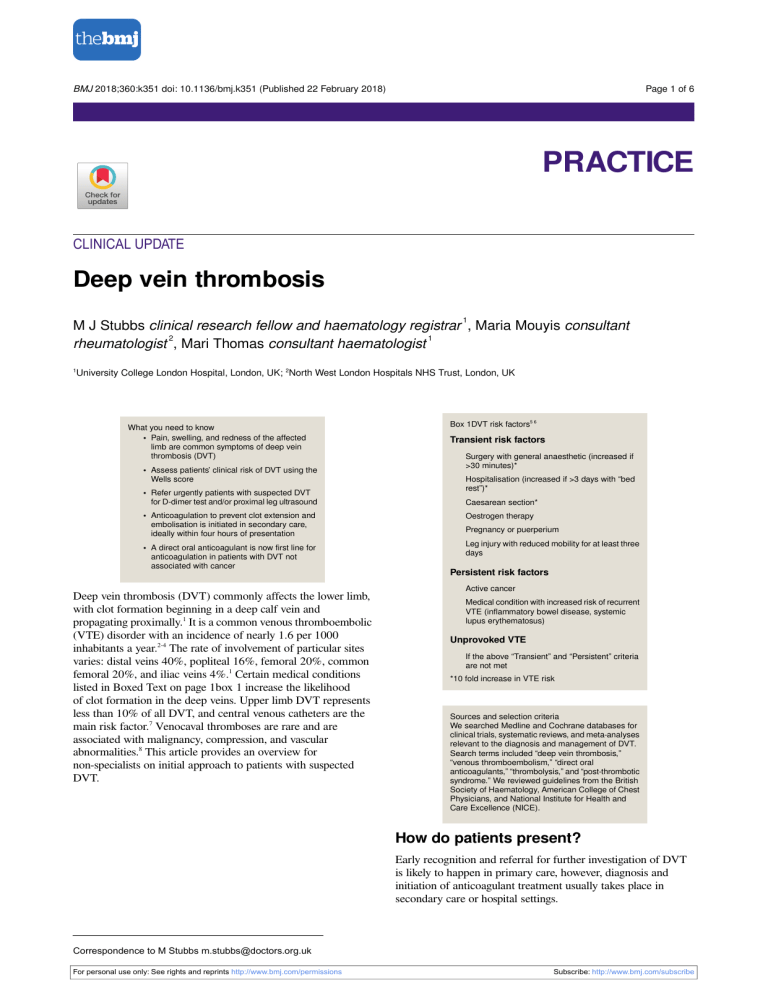
BMJ 2018;360:k351 doi: 10.1136/bmj.k351 (Published 22 February 2018) Page 1 of 6 Practice PRACTICE CLINICAL UPDATE Deep vein thrombosis 1 M J Stubbs clinical research fellow and haematology registrar , Maria Mouyis consultant 2 1 rheumatologist , Mari Thomas consultant haematologist 1 University College London Hospital, London, UK; 2North West London Hospitals NHS Trust, London, UK What you need to know • Pain, swelling, and redness of the affected limb are common symptoms of deep vein thrombosis (DVT) • Assess patients’ clinical risk of DVT using the Wells score • Refer urgently patients with suspected DVT for D-dimer test and/or proximal leg ultrasound • Anticoagulation to prevent clot extension and embolisation is initiated in secondary care, ideally within four hours of presentation • A direct oral anticoagulant is now first line for anticoagulation in patients with DVT not associated with cancer Deep vein thrombosis (DVT) commonly affects the lower limb, with clot formation beginning in a deep calf vein and propagating proximally.1 It is a common venous thromboembolic (VTE) disorder with an incidence of nearly 1.6 per 1000 inhabitants a year.2-4 The rate of involvement of particular sites varies: distal veins 40%, popliteal 16%, femoral 20%, common femoral 20%, and iliac veins 4%.1 Certain medical conditions listed in Boxed Text on page 1box 1 increase the likelihood of clot formation in the deep veins. Upper limb DVT represents less than 10% of all DVT, and central venous catheters are the main risk factor.7 Venocaval thromboses are rare and are associated with malignancy, compression, and vascular abnormalities.8 This article provides an overview for non-specialists on initial approach to patients with suspected DVT. Box 1DVT risk factors5 6 Transient risk factors Surgery with general anaesthetic (increased if >30 minutes)* Hospitalisation (increased if >3 days with “bed rest”)* Caesarean section* Oestrogen therapy Pregnancy or puerperium Leg injury with reduced mobility for at least three days Persistent risk factors Active cancer Medical condition with increased risk of recurrent VTE (inflammatory bowel disease, systemic lupus erythematosus) Unprovoked VTE If the above “Transient” and “Persistent” criteria are not met *10 fold increase in VTE risk Sources and selection criteria We searched Medline and Cochrane databases for clinical trials, systematic reviews, and meta-analyses relevant to the diagnosis and management of DVT. Search terms included “deep vein thrombosis,” “venous thromboembolism,” “direct oral anticoagulants,” “thrombolysis,” and “post-thrombotic syndrome.” We reviewed guidelines from the British Society of Haematology, American College of Chest Physicians, and National Institute for Health and Care Excellence (NICE). How do patients present? Early recognition and referral for further investigation of DVT is likely to happen in primary care, however, diagnosis and initiation of anticoagulant treatment usually takes place in secondary care or hospital settings. Correspondence to M Stubbs [email protected] For personal use only: See rights and reprints http://www.bmj.com/permissions Subscribe: http://www.bmj.com/subscribe BMJ 2018;360:k351 doi: 10.1136/bmj.k351 (Published 22 February 2018) Page 2 of 6 PRACTICE Pain, swelling, and redness in the affected limb are common symptoms. Pain is typically throbbing in nature, and comes on while walking or bearing weight. Skin changes include erythema, warmth, and oedema (fig 1⇓).9 10 Some patients are asymptomatic, having had investigation for other conditions such as pulmonary embolism or malignancy11 (although data on how many is unavailable). Alternative diagnoses to consider include cellulitis, ruptured Baker’s cyst, chronic venous insufficiency, and lymphoedema.2-4 How is it diagnosed? Refer patients with symptoms suggestive of DVT to acute/emergency services for further evaluation.12 Diagnosis is based on clinical assessment and investigations (ultrasound or D-dimer) being conducted ideally within four hours of presentation as per NICE recommendations.12 If a delay is expected, interim anticoagulation can be offered in hospital or a secondary care setting (discussed below under ‘How is it treated?’) to avoid clot progression and the risk of pulmonary embolism.12 Ultrasound investigation is recommended within 24 hours in suspected cases.12 Clinical score The pre-test probability of DVT can be calculated using a validated score, such as the Wells score (Boxed Text on page 2box 2), which combines assessment for risk factors and clinical features of DVT.12 NICE recommends using the modified two-tier Wells score, whereas the American College of Chest Physicians (ACCP) guidelines cite the three-tiered Wells score.9 10 Both scores are clinically acceptable, and local departmental guidance determines which is used in practice.12 14 Box 2Pre-test probability scores for DVT10 13 Wells score (1997) Active cancer (treatment ongoing or within 6 months, or palliative) +1 point Paralysis, paresis, recent immobilisation of the lower limbs +1 point Recently bedridden for >3 days, or major surgery within 4 weeks +1 point Localised tenderness along distribution of deep venous system +1 point Entire leg swelling +1 point Calf swelling, >3 cm, compared with asymptomatic leg +1 point Pitting oedema (greater in symptomatic leg) +1 point Collateral superficial veins (non-varicose) +1 point Alternative diagnosis as likely, or more likely, than DVT −2 points Modified Wells score (2003) Scoring criteria as for Wells Score, with the addition of Previous documented DVT +1 point Interpretation Wells score ≥3 high, 1-2 moderate, 0 low probability Modified Wells score≥2 likely DVT, <2 DVT unlikely In clinical trials,10 13 the Wells score has shown a high negative predictive value in patients with a low probability score for DVT (negative predictive value 99.7%, 95% confidence interval 98.3% to 100%). It is thus effective to exclude DVT in these patients. However, the score had a lower negative predictive value in high risk patients (82%, 95% confidence interval 98.3% to 100%), and should not be used to rule out DVT in these For personal use only: See rights and reprints http://www.bmj.com/permissions patients.10 13 Patients were excluded if they were under 18, had less than three months’ life expectancy, were pregnant, or had already started anticoagulant treatment. The score is not appropriate in these groups. Investigation with D-dimer or ultrasound is required after calculating the pre-test probability in all patients, but the investigation pathway varies (infographic).14 D-dimer test The D-dimer blood test measures degraded fibrinogen, which is raised in patients with a clot. The reference range varies and is set by the laboratory. This test is recommended in patients with a low or moderate clinical probability of DVT, as calculated by the Wells score.13 Patients with a high clinical probability of DVT need not undergo the D-dimer test and should directly have ultrasonography.13 The test is easy to perform and readily available in secondary care. It has high sensitivity but is not very specific. Thus, a negative D-dimer can be used to exclude DVT in patients with a low clinical probability of DVT. However, it cannot confirm DVT, as D-dimer can be raised in other conditions including malignancy, infection, pregnancy, post-surgery, inflammation/trauma, disseminated intravascular coagulopathy, and renal impairment.14 15 An ultrasound is needed to confirm DVT.14 Ultrasonography Request an ultrasound scan of the leg in patients with a high pre-test probability of DVT or with a low/moderate probability and a positive D-dimer test (fig 2⇓). Guidelines recommend performing an ultrasound (when indicated) within four hours of presentation, otherwise interim anticoagulation should be initiated. If not possible within four hours, ultrasound should be performed within 24 hours. In practice, substantial delays in ultrasound scanning for DVT should not occur. Proximal, above knee ultrasound is recommended in low risk cases, and either proximal or whole leg in high risk cases.12 14 Rarely, a repeat scan after one week might be required to ensure DVT is not missed, for example in patients with a moderate/high probability and an initial negative ultrasound scan. Initiate anticoagulation during this window period.12 14 Alternative imaging modalities, such as venography (computed tomography or magnetic resonance imaging, where radio-opaque contrast is injected to visualise the patency of vasculature) can be used if there is diagnostic uncertainty (eg, an inconclusive ultrasound report that might be caused by chronic venous scarring) or if ultrasound is impractical (eg, plaster cast).14 These modalities are not routinely recommended, and should be discussed with a specialist before requesting them.14 What additional investigations might be considered? Cancer is a recognised risk factor for developing DVT. Up to 10% of DVT patients are subsequently diagnosed with a malignancy.16 17 However, recent trials have found a low yield from screening for occult malignancy in patients with unprovoked DVT.18-21 NICE now recommends only a limited cancer screen in patients with unprovoked DVT (ie, history, examination, basic blood tests, and age appropriate national cancer screening investigation, eg, in UK, mammography in women who are 50 to 70).12 Inherited and acquired thrombophilias contribute to DVT. There is conflicting guidance on the role of thrombophilia testing,22 and this should be discussed with a haematologist.23 Subscribe: http://www.bmj.com/subscribe BMJ 2018;360:k351 doi: 10.1136/bmj.k351 (Published 22 February 2018) Page 3 of 6 PRACTICE What are the complications? Common chronic complications after DVT include post-thrombotic syndrome (25%-38%) and venous ulceration (9.8%), whereas pulmonary embolism (6%-32%) is more acute and can be fatal in 5%-10% of cases.1-27 Complications can occur immediately following an acute DVT or several months to years later. Patients with post-thrombotic syndrome might present with pain, swelling/oedema, leg heaviness, aching, skin discolouration, or venous ulceration. Venous ulcers are typically located medially above the ankle, with an irregular outline, and can be discoloured, oedematous, and exudative. The main risk factors include recurrent ipsilateral DVT and non-therapeutic international normalised ratio (>50% of the time).28 Other risks include advanced age, increased body mass index, female sex, and size and location of thrombosis.28 29 Rarer complications include chronic thromboembolic pulmonary hypertension, sudden death, and loss of limb.1 How is it treated? Anticoagulation to prevent clot extension and embolisation is the standard treatment, where bleeding risk permits. It is started in hospital or secondary care settings after a diagnosis of DVT is established, preferably within four hours of presentation.12 30 Direct oral anticoagulants Guidelines from NICE and ACCP recommend direct oral anticoagulants (DOACs) as first line treatment for DVT.12 14 DOACs include direct factor Xa inhibitors apixaban, rivaroxaban, and edoxaban, and a direct thrombin inhibitor, dabigatran. Randomised controlled trials have shown DOACs to be at least as effective as vitamin K antagonists in treating thromboembolic events (see supplemental file for details of these trials).31-34 Dabigatran and edoxaban require initial treatment with low molecular weight heparin (LMWH) (>5 days) before commencement of the DOAC, whereas rivaroxaban and apixaban do not31-36 (see supplementary file). Typically patients are anticoagulated between five and 17 hours of taking these drugs. Caution is advised, however, in patients with chronic renal impairment, particularly with a glomerular filtration rate <30 ml/min, and in patients taking other drugs that have possible risk of interaction.37 Low molecular weight heparin and warfarin These are established anticoagulants that are preferred in certain people, such as those with liver and renal dysfunction, extremes of body weight (<50 kg or >120 kg), and DVT associated with cancer. Warfarin, a vitamin K antagonist, is an effective and cheap oral anticoagulant. However, it requires frequent monitoring with blood tests, and has a narrow therapeutic window, with bleeding events being not uncommon.30 LMWH is delivered daily or twice daily as a subcutaneous injection. It has a rapid onset of action, predictable anticoagulation effect, and does not require routine monitoring.30 LMWH is recommended in patients with cancer-associated VTE, because VTE recurrence rates are lower than in patients taking vitamin K antagonists.18-41 However, in a randomised controlled trial (1050 patients with cancer-associated VTE) oral edoxaban was shown to be non-inferior to daltaparin in terms of VTE recurrence (non-inferiority P=0.006, 95% confidence interval 0.70 to 1.36), but with a higher rate of major bleeding (P=0.04, 95% confidence interval 1.03 to 3.04).42 More For personal use only: See rights and reprints http://www.bmj.com/permissions investigation is needed before recommending DOACs in cancer-associated VTE. How long is anticoagulation continued? The optimal duration of anticoagulation depends on what provoked the DVT, bleeding risk, patient preference, and thrombophilia status. Consensus expert opinion is to offer three months of anticoagulation treatment for patients with a DVT provoked by surgery or with a non-surgical transient risk factor.38 Patients with a proximal DVT and a persistent risk factor or high risk of DVT recurrence might be offered lifelong anticoagulation.43 Scoring systems such as the DASH prediction score and HERD002 score (in women) help predict recurrence after an unprovoked VTE event.43 44 These might be used for risk stratification of patients to guide duration of anticoagulation. What other treatments are available? Some patients, such as those with extensive DVT, might require escalation of treatment beyond simple anticoagulation to reduce complications and recurrence of DVT. Boxed Text on page 3Box 3 lists other treatment options for DVT clot dissolution. These might be offered in specialist settings. Box 3Other treatment options for patients with DVT45 Percutaneous endovascular venous thrombolysis Endovascular mechanical thrombectomy Ultrasonic destruction of thrombus (+ thrombolysis) Endovascular stenting (including iliac vein stenting) Systemic thrombolysis (rarely used) Surgical thrombectomy (rarely used, reserved for failed thrombolysis) Inferior vena cava filter (rarely used and with limited/controversial evidence) A Cochrane review (17 trials, 1103 patients) found that thrombolysis with anticoagulation reduced the incidence of post-thrombotic syndrome by a third compared with anticoagulation alone in patients with lower limb DVT.46 47 On follow-up at >5 years, the rate of post-thrombotic syndrome was 390/1000 in the thrombolysis group, compared with 658/1000 in the control group (relative risk 0.58, 95% confidence interval 0.45 to 0.77; P<0.0001). No difference in mortality was observed between the two groups. Bleeding complications were increased in the thrombolysis group compared with controls (relative risk 2.23; 95% confidence interval 1.41 to 3.52, P=0.0006). There is limited data on the effect of thrombolysis in preventing leg ulceration, pulmonary embolism, and recurrence. NICE guidelines suggest thrombolysis can be considered in an acute proximal DVT (<14 days) in a patient with low bleeding risk, with good performance status, and life expectancy >1 year.47 Selection of patients must be guided by a multidisciplinary approach, with inputs from a vascular surgeon and interventional radiologist, and must consider patient preferences.28-48 Results from the large multicentre ATTRACT study comparing catheter-directed thrombolysis with standard anticoagulation treatment in 692 DVT patients are expected soon, and will further inform thrombolysis decisions.41 Subscribe: http://www.bmj.com/subscribe BMJ 2018;360:k351 doi: 10.1136/bmj.k351 (Published 22 February 2018) Page 4 of 6 PRACTICE Is there a role for compression stockings? Historically, it was believed that wearing compression stockings after DVT could reduce the risk of developing post-thrombotic syndrome. However, trials and meta-analyses have found no evidence of this,49-51 and it is no longer recommended to wear compression stockings to prevent post-thrombotic syndrome.38 How does management of superficial vein thrombosis differ? Patients with superficial vein thrombosis can present with leg pain, erythema, and swelling, which are often indistinguishable from DVT. Patients with a recent superficial vein thrombosis have a four- to sixfold increased risk for DVT/pulmonary embolism. Risk factors for extension of superficial vein thrombosis into DVT include a superficial vein thrombosis <10 cm from the saphenofemoral junction, male sex, history of VTE, cancer, absence of varicose veins, and severe venous insufficiency.8 Management is directed at reducing the risk of DVT, and has been discussed in depth elsewhere.52 Questions for future research What is the efficacy and safety of DOACs for treatment of DVT in patients with cancer? 1 2 3 4 5 6 7 8 9 10 11 12 13 Additional educational resources • British Society of Haematology haemostasis guidelines (www.b-s-h.org.uk/guidelines) • Royal College of Obstetricians and Gynaecologists guidelines (www.rcog.org.uk/ guidelines) • American College of Chest Physicians (www. chestnet.org/Guidelines-and-Resources) 14 15 16 • BMJ review—BMJ clinical review. Diagnosis and management of heritable thrombophilias14 • BMJ Practice Pointer—Superficial vein thrombosis: http://www.bmj.com/content/350/ bmj.h2039 17 18 19 Information resources for patients Thrombosis UK Charity:www.thrombosisuk.org 20 Education into practice • Describe how you would investigate a patient with suspected DVT • How would you draw up a protocol for management of DVT in hospital? • What are the different treatment options for DVT, including indications for bridging therapy and duration of treatment? 21 22 23 24 25 How patients were involved in the creation of this article A patient and carer kindly reviewed an earlier draft of this article. The patient highlighted the importance of making a timely diagnosis of DVT. Based on his suggestion, we have included the timescales suggested by NICE for urgent investigations and initiation of treatment. 26 27 28 29 30 Contributors M J Stubbs, M Mouyis, M Thomas 31 We have read and understood The BMJ policy on declaration of interests and declare that we have no competing interests. Patients were not involved in the creation of this article. 32 Strijkers RH, Cate-Hoek AJ, Bukkems SF, Wittens CH. Management of deep vein thrombosis and prevention of post-thrombotic syndrome. BMJ 2011;343:d5916. 10.1136/bmj.d5916 22042752 Nordström M, Lindblad B, Bergqvist D, Kjellström T. A prospective study of the incidence of deep-vein thrombosis within a defined urban population. J Intern Med 1992;232:155-60. 10.1111/j.1365-2796.1992.tb00565.x 1506812 Hirsh J, Lee AYY. How we diagnose and treat deep vein thrombosis. Blood 2002;99:3102-10. 10.1182/blood.V99.9.3102 11964271 Kearon C, Julian JA, Newman TE, Ginsberg JS. Non-invasive diagnosis of deep venous thrombosis. Ann Intern Med 1998;128:663-77. 10.7326/0003-4819-128-8-199804150-00011 9537941 Tan M, van Rooden CJ, Westerbeek RE, Huisman MV. Diagnostic management of clinically suspected acute deep vein thrombosis. Br J Haematol 2009;146:347-60. 10.1111/j.1365-2141.2009.07732.x 19466972 Kearon C, Ageno W, Cannegieter SC, Cosmi B, Geersing GJ, Kyrle PASubcommittees on Control of Anticoagulation, and Predictive and Diagnostic Variables in Thrombotic Disease. Categorization of patients as having provoked or unprovoked venous thromboembolism: guidance from the SSC of ISTH. J Thromb Haemost 2016;14:1480-3. 10.1111/jth.13336 27428935 Flinterman LE, Van Der Meer FJ, Rosendaal FR, Doggen CJ. Current perspective of venous thrombosis in the upper extremity. J Thromb Haemost 2008;6:1262-6. 10.1111/j.1538-7836.2008.03017.x 18485082 Tait C, Baglin T, Watson H, etal. British Committee for Standards in Haematology. Guidelines on the investigation and management of venous thrombosis at unusual sites. Br J Haematol 2012;159:28-38. 10.1111/j.1365-2141.2012.09249.x 22881455 Cogo A, Lensing AW, Koopman MM, etal . Compression ultrasonography for diagnostic management of patients with clinically suspected deep vein thrombosis: prospective cohort study. BMJ 1998;316:17-20. 10.1136/bmj.316.7124.17 9451260 Wells PS, Anderson DR, Bormanis J, etal . Value of assessment of pretest probability of deep-vein thrombosis in clinical management. Lancet 1997;350:1795-8. 10.1016/S0140-6736(97)08140-3 9428249 Yamashita Y, Shiomi H, Morimoto T, etal . Asymptomatic lower extremity deep vein thrombosis—clinical characteristics, management strategies, and long-term outcomes. Circ J 2017;81:1936-44. 10.1253/circj.CJ-17-0445 28659542 National Institute for Health and Care Excellence. Deep vein thrombosis. 2013. https:// cks.nice.org.uk/deep-vein-thrombosis Wells PS, Anderson DR, Rodger M, etal . Evaluation of D-dimer in the diagnosis of suspected deep-vein thrombosis. N Engl J Med 2003;349:1227-35. 10.1056/NEJMoa023153 14507948 Bates SM, Jaeschke R, Stevens SM, etal . Diagnosis of DVT: antithrombotic therapy and prevention of thrombosis, 9th ed. American College of Chest Physicians evidence-based clinical practice guidelines. Chest 2012;141:351-418. Righini M, Van Es J, Den Exter PL, etal . Age-adjusted D-dimer cutoff levels to rule out pulmonary embolism: the ADJUST-PE study. JAMA 2014;311:1117-24. 10.1001/jama.2014.2135 24643601 Carrier M, Le Gal G, Wells PS, Fergusson D, Ramsay T, Rodger MA. Systematic review: the Trousseau syndrome revisited: should we screen extensively for cancer in patients with venous thromboembolism?Ann Intern Med 2008;149:323-33. 10.7326/0003-4819-149-5-200809020-00007 18765702 Gheshmy A, Carrier M. Venous thromboembolism and occult cancer: impact on clinical practice. Thromb Res 2016;140(Suppl 1):S8-11. 10.1016/S0049-3848(16)30091-3 27067984 Watson HG, Keeling DM, Laffan M, Tait RC, Makris MBritish Committee for Standards in Haematology. Guideline on aspects of cancer-related venous thrombosis. Br J Haematol 2015;170:640-8. 10.1111/bjh.13556 26114207 Van Doormaal FF, Terpstra W, Van Der Griend R, etal . Is extensive screening for cancer in idiopathic venous thromboembolism warranted?J Thromb Haemost 2011;9:79-84. 10.1111/j.1538-7836.2010.04101.x 20946181 Robin P, Le Roux PY, Planquette B, etal. MVTEP study group. Limited screening with versus without (18)F-fluorodeoxyglucose PET/CT for occult malignancy in unprovoked venous thromboembolism: an open-label randomised controlled trial. Lancet Oncol 2016;17:193-9. 10.1016/S1470-2045(15)00480-5 26672686 Prandoni P, Bernardi E, Valle FD, etal . Extensive computed tomography versus limited screening for detection of occult cancer in unprovoked venous thromboembolism: a multicenter, controlled, randomized clinical trial. Semin Thromb Hemost 2016;42:884-90. 10.1055/s-0036-1592335 27764880 MacCallum P, Bowles L, Keeling D. Diagnosis and management of heritable thrombophilias. BMJ 2014;349:g4387. 10.1136/bmj.g4387 25035247 Baglin T, Gray E, Greaves M, etal. British Committee for Standards in Haematology. Clinical guidelines for testing for heritable thrombophilia. Br J Haematol 2010;149:209-20. 10.1111/j.1365-2141.2009.08022.x 20128794 Eichlisberger R, Frauchiger B, Widmer MT, Widmer LK, Jäger K. [Late sequelae of deep venous thrombosis: a 13-year follow-up of 223 patients]. Vasa 1994;23:234-43.7975869 Kucher N. Clinical practice. Deep-vein thrombosis of the upper extremities. N Engl J Med 2011;364:861-9. 10.1056/NEJMcp1008740 21366477 Lapner ST, Kearon C. Diagnosis and management of pulmonary embolism. BMJ 2013;346:f757. 10.1136/bmj.f757 23427133 Walker N, Rodgers A, Birchall N, Norton R, MacMahon S. Leg ulceration as a long-term complication of deep vein thrombosis. J Vasc Surg 2003;38:1331-5. 10.1016/S0741-5214(03)00917-0 14681637 Sista AK, Vedantham S, Kaufman JA, Madoff DC. Endovascular interventions for acute and chronic lower extremity deep venous disease: state of the art. Radiology 2015;276:31-53. 10.1148/radiol.2015132603 26101920 Strijkers RH, Arnoldussen CW, Wittens CH. Validation of the LET classification. Phlebology 2015;30(Suppl):14-9. 10.1177/0268355515569133 25729063 National Institute for Clinical Excellence. Guidelines on licensing for DOACs. 2015 https: //cks.nice.org.uk/anticoagulation-oral Bauersachs R, Berkowitz SD, Brenner B, etal. EINSTEIN Investigators. Oral rivaroxaban for symptomatic venous thromboembolism. N Engl J Med 2010;363:2499-510. 10.1056/NEJMoa1007903 21128814 Agnelli G, Buller HR, Cohen A, etal. AMPLIFY Investigators. Oral apixaban for the treatment of acute venous thromboembolism. N Engl J Med 2013;369:799-808. 10.1056/NEJMoa1302507 23808982 Provenance and peer review: Commissioned; externally peer reviewed. For personal use only: See rights and reprints http://www.bmj.com/permissions Subscribe: http://www.bmj.com/subscribe BMJ 2018;360:k351 doi: 10.1136/bmj.k351 (Published 22 February 2018) Page 5 of 6 PRACTICE 33 34 35 36 37 38 39 40 41 42 Schulman S, Kakkar AK, Goldhaber SZ, etal. RE-COVER II Trial Investigators. Treatment of acute venous thromboembolism with dabigatran or warfarin and pooled analysis. Circulation 2014;129:764-72. 10.1161/CIRCULATIONAHA.113.004450 24344086 Connolly SJ, Ezekowitz MD, Yusuf S, etal. RE-LY Steering Committee and Investigators. Dabigatran versus warfarin in patients with atrial fibrillation. N Engl J Med 2009;361:1139-51. 10.1056/NEJMoa0905561 19717844 Büller HR, Décousus H, Grosso MA, etal. Hokusai-VTE Investigators. Edoxaban versus warfarin for the treatment of symptomatic venous thromboembolism. N Engl J Med 2013;369:1406-15. 10.1056/NEJMoa1306638 23991658 Gómez-Outes A, Terleira-Fernández AI, Lecumberri R, Suárez-Gea ML, Vargas-Castrillón E. Direct oral anticoagulants in the treatment of acute venous thromboembolism: a systematic review and meta-analysis. Thromb Res 2014;134:774-82. 10.1016/j.thromres.2014.06.020 25037495 Hughes S, Szeki I, Nash MJ, Thachil J. Anticoagulation in chronic kidney disease patients-the practical aspects. Clin Kidney J 2014;7:442-9. 10.1093/ckj/sfu080 25878775 Kearon C, Akl EA, Ornelas J, etal . Antithrombotic therapy for VTE disease: CHEST guideline and expert panel report. Chest 2016;149:315-52. 10.1016/j.chest.2015.11.026 26867832 Lee AY, Levine MN, Baker RI, etal. Randomized Comparison of Low-Molecular-Weight Heparin versus Oral Anticoagulant Therapy for the Prevention of Recurrent Venous Thromboembolism in Patients with Cancer (CLOT) Investigators. Low-molecular-weight heparin versus a coumarin for the prevention of recurrent venous thromboembolism in patients with cancer. N Engl J Med 2003;349:146-53. 10.1056/NEJMoa025313 12853587 Lee AYY, Kamphuisen PW, Meyer G, etal. CATCH Investigators. Tinzaparin vs warfarin for treatment of acute venous thromboembolism in patients with active cancer: a randomized clinical trial. JAMA 2015;314:677-86. 10.1001/jama.2015.9243 26284719 Akl EA, Kahale L, Barba M, etal . Anticoagulation for the long-term treatment of venous thromboembolism in patients with cancer. Cochrane Database Syst Rev 2014;8:CD006650.25004410 Raskob GE, van Es N, Verhamme P, etal. Hokusai VTE Cancer Investigators. Edoxaban for the treatment of cancer associated venous thromboembolism. N Engl J Med 2017. 10.1056/NEJMoa1711948. 29231094 For personal use only: See rights and reprints http://www.bmj.com/permissions 43 44 45 46 47 48 49 50 51 52 Tosetto A, Iorio A, Marcucci M, etal . Predicting disease recurrence in patients with previous unprovoked venous thromboembolism: a proposed prediction score (DASH). J Thromb Haemost 2012;10:1019-25. 10.1111/j.1538-7836.2012.04735.x 22489957 Rodger MA, Le Gal G, Anderson DR, etal. REVERSE II Study Investigators. Validating the HERDOO2 rule to guide treatment duration for women with unprovoked venous thrombosis: multinational prospective cohort management study. BMJ 2017;356:j1065. 10.1136/bmj.j1065 28314711 Behravesh S, Hoang P, Nanda A, et al. Pathogenesis of thromboembolism and endovascular management. Thrombosis 2017;2017:3039713. Watson L, Broderick C, Armon MP. Thrombolysis for acute deep vein thrombosis. Cochrane Database Syst Rev 2014;23:CD002783.24452314 National Institute for Health and Care Excellence. Guidelines on ultrasound-enhanced, catheter-directed thrombolysis for deep vein thrombosis. 2015. https://www.nice.org.uk/ guidance/ipg523 Watson L, Broderick C, Armon MP. Thrombolysis for acute deep vein thrombosis. Cochrane Database Syst Rev 2016;11:CD002783.27830895 Kahn SR, Shapiro S, Wells PS, etal. SOX trial investigators. Compression stockings to prevent post-thrombotic syndrome: a randomised placebo-controlled trial. Lancet 2014;383:880-8. 10.1016/S0140-6736(13)61902-9 24315521 Subbiah R, Aggarwal V, Zhao H, Kolluri R, Chatterjee S, Bashir R. Effect of compression stockings on post thrombotic syndrome in patients with deep vein thrombosis: a meta-analysis of randomised controlled trials. Lancet Haematol 2016;3:e293-300. 10.1016/S2352-3026(16)30017-5 27264039 Jin YW, Ye H, Li FY, Xiong XZ, Cheng NS. Compression stockings for prevention of postthrombotic syndrome: a systematic review and meta-analysis. Vasc Endovascular Surg 2016;50:328-34. 10.1177/1538574416652242 27260750 Scott G, Mahdi AJ, Alikhan R. Superficial vein thrombosis: a current approach to management. Br J Haematol 2015;168:639-45. 10.1111/bjh.13255 25521017 Published by the BMJ Publishing Group Limited. For permission to use (where not already granted under a licence) please go to http://group.bmj.com/group/rights-licensing/ permissions Subscribe: http://www.bmj.com/subscribe BMJ 2018;360:k351 doi: 10.1136/bmj.k351 (Published 22 February 2018) Page 6 of 6 PRACTICE Figures Fig 1 Deep vein thrombosis in the right leg of a patient, with leg swelling and erythema visible Fig 2 Ultrasound image of the lower limb veins. (A) Normal deep vein, with patent vessel visible. (B) Thrombosed deep vein, with occluded vein apparent within dashed line For personal use only: See rights and reprints http://www.bmj.com/permissions Subscribe: http://www.bmj.com/subscribe
